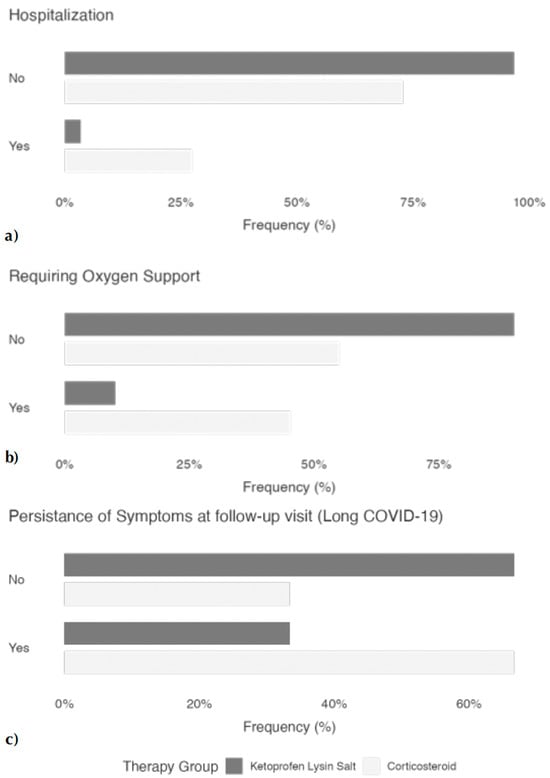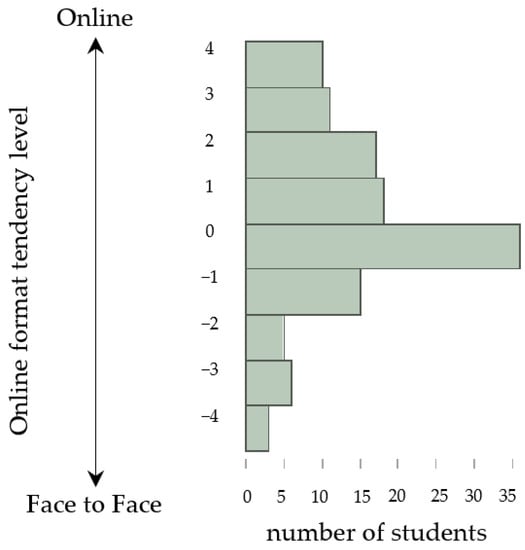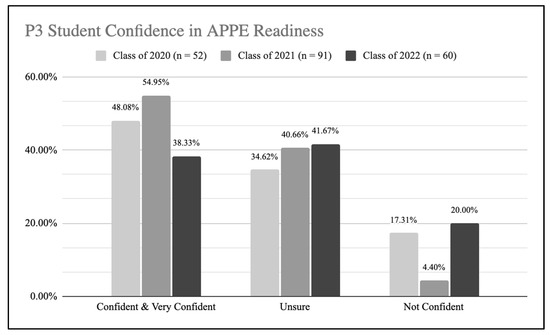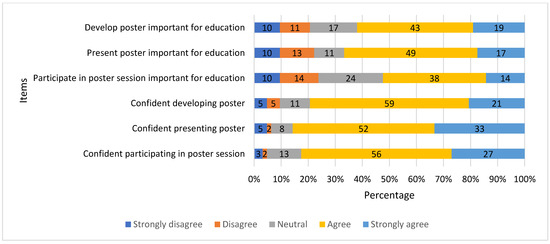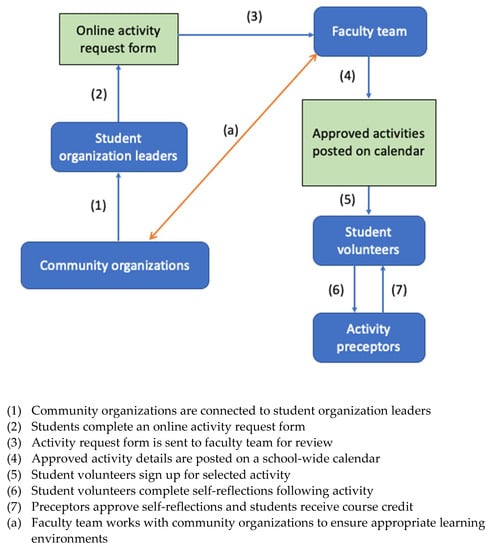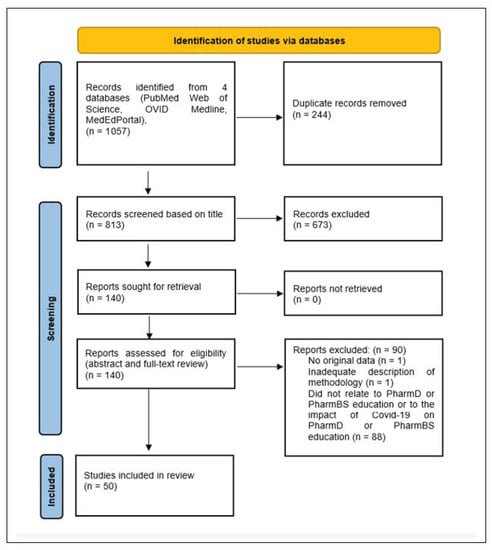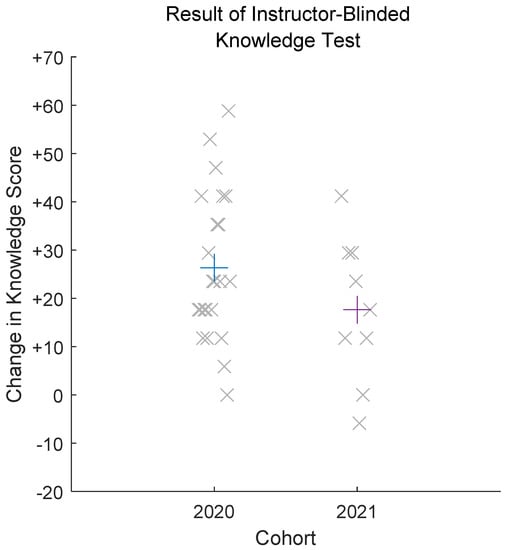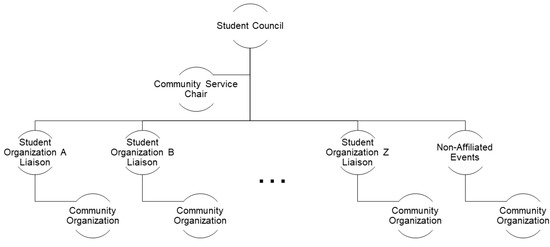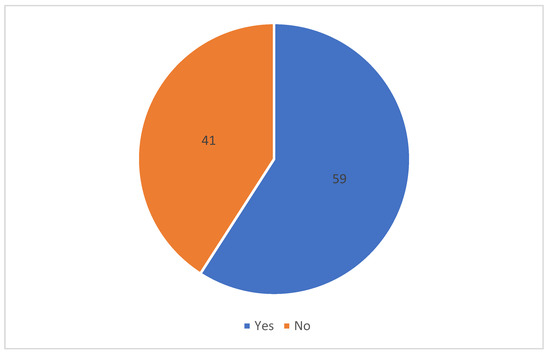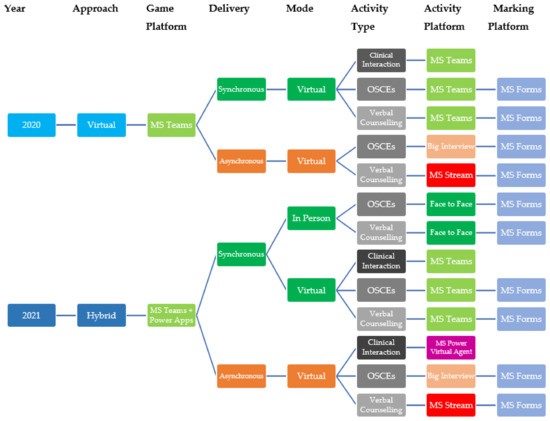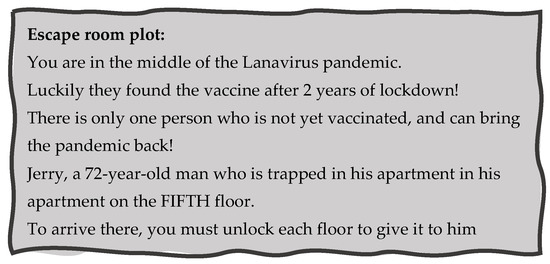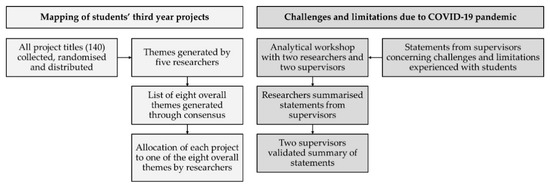New Insights into Pharmacy Teaching and Learning during COVID-19
Share This Topical Collection
Editors
 Dr. Ana Seselja Perisin
Dr. Ana Seselja Perisin
 Dr. Ana Seselja Perisin
Dr. Ana Seselja Perisin
E-Mail
Website1
Website2
Guest Editor
Department of Pharmacy, School of Medicine, University of Split, Split, Croatia
Interests: pharmacy education; knowledge; attitudes; interprofessional collaboration; medication safety; antibiotics
Topical Collection Information
Dear Colleagues,
The COVID-19 pandemic has significantly influenced everyday life for all of us during the last 500 days. However, the younger generations are particular casualties, as they are affected from both a professional (educational) and personal point of view during their formative years. Both pharmacy students and their educators have been under a considerable level of stress as remote learning became a “new normal” way of teaching. This is in direct contrast to the “regular way” of teaching pharmacy, with significant teaching hours in community pharmacies and different laboratories. We can speculate that experiential learning has been, hopefully partially and temporarily, replaced by simulations and remote learning. However, educators worldwide have responded imaginatively and creatively to these COVID-19-related limitations, and those experiences should be shared with colleagues worldwide, as the burden of the pandemic is shared among us all. Furthermore, studies that compare differences between knowledge, skills, and attitudes of pharmacy students, before and during COVID-19, are warranted.
We invite you to share your experiences in a concrete and practical way that aims to support pharmacy educators worldwide during COVID-19.
Dr. Darko Modun
Dr. Ana Seselja Perisin
Guest Editors
Manuscript Submission Information
Manuscripts should be submitted online at www.mdpi.com by registering and logging in to this website. Once you are registered, click here to go to the submission form. Manuscripts can be submitted until the deadline. All submissions that pass pre-check are peer-reviewed. Accepted papers will be published continuously in the journal (as soon as accepted) and will be listed together on the collection website. Research articles, review articles as well as short communications are invited. For planned papers, a title and short abstract (about 100 words) can be sent to the Editorial Office for announcement on this website.
Submitted manuscripts should not have been published previously, nor be under consideration for publication elsewhere (except conference proceedings papers). All manuscripts are thoroughly refereed through a single-blind peer-review process. A guide for authors and other relevant information for submission of manuscripts is available on the Instructions for Authors page. Pharmacy is an international peer-reviewed open access semimonthly journal published by MDPI.
Please visit the Instructions for Authors page before submitting a manuscript.
The Article Processing Charge (APC) for publication in this open access journal is 1800 CHF (Swiss Francs).
Submitted papers should be well formatted and use good English. Authors may use MDPI's
English editing service prior to publication or during author revisions.
Keywords
- pharmacy education
- COVID-19
- remote learning
- experiential learning
- laboratory
- simulations
- community pharmacy
Published Papers (19 papers)
Open AccessArticle
Enhancing the Role of Community Pharmacists in Medication Safety: A Qualitative Study of Voices from the Frontline
by
Annesha White, Erika L. Thompson, Solyi Kim, Janice A. Osei, Kimberly G. Fulda and Yan Xiao
Viewed by 814
Abstract
Preventable adverse drug events (ADEs) remain a significant threat in community settings, a challenge that is critical in community pharmacy settings where continuity of care and healthcare access can be limited. This qualitative study explored the perspectives of 13 community pharmacists through focus
[...] Read more.
Preventable adverse drug events (ADEs) remain a significant threat in community settings, a challenge that is critical in community pharmacy settings where continuity of care and healthcare access can be limited. This qualitative study explored the perspectives of 13 community pharmacists through focus groups and interviews to identify barriers and propose solutions to enhance their role in patient care. Pharmacists emphasized their critical position in ensuring safe medication use, particularly for older adults managing multiple chronic conditions. Key findings revealed five themes: (1) defining medication safety as minimizing risk and empowering patients; (2) characteristics of the “perfect patient,” including medication awareness and proactive engagement; (3) the pharmacist’s role in detecting and resolving medication-related problems; (4) systemic barriers such as time constraints, lack of access to patient records, insufficient privacy, and undervaluation of pharmacists’ roles; and (5) proposed solutions including private counseling areas, increased staffing, integrated electronic health records, and legislative recognition of pharmacists as healthcare providers. Strengthening collaboration with physicians and empowering patients through education were also highlighted as key strategies. These findings underscore the need for systemic changes—especially in light of lessons learned during the pandemic—to support pharmacists in delivering comprehensive medication management and improving patient safety.
Full article
Open AccessArticle
Type II Diabetes Mellitus and COVID-19: Exploring Insulin Management in Patients from Family Medicine Clinics
by
Chinemerem Opara, Annesha White, Kimberly G. Fulda, Somer Blair, Clare Aduwari, Nihitha Nukala and Yan Xiao
Viewed by 393
Abstract
The COVID-19 pandemic disrupted routine care for individuals with type 2 diabetes mellitus (T2DM), raising concerns about its impact on glycemic control and medication management. This study evaluated the relationship between insulin use and glycemic control among T2DM patients during the pandemic. A
[...] Read more.
The COVID-19 pandemic disrupted routine care for individuals with type 2 diabetes mellitus (T2DM), raising concerns about its impact on glycemic control and medication management. This study evaluated the relationship between insulin use and glycemic control among T2DM patients during the pandemic. A retrospective analysis was conducted using deidentified clinical and prescription data from two family medicine clinics, comparing data from the pre-COVID-19 period (1 March 2019–13 March 2020) and during the COVID-19 pandemic (14 March 2020–31 March 2021). Patients included had at least two A1c values before the COVID and one during the COVID. A1c control was defined as less than 8%. Among 992 patients, 238 experienced a change in A1c status: 128 improved and 110 worsened. Mean A1c remained stable at 8.2 across both periods. A majority of patients who improved were using insulin during the COVID-19 era, although some discontinued insulin at some point during the study period. These findings suggest that consistent insulin therapy may have helped maintain glycemic control despite healthcare disruptions. This study highlights the importance of sustained medication management and suggests that integrating telehealth and pharmacist-led care could support diabetes control during future healthcare system challenges.
Full article
Open AccessArticle
Ketoprofen Lysine Salt Versus Corticosteroids in Early Outpatient Management of Mild and Moderate COVID-19: A Retrospective Study
by
Domenica Francesca Mariniello, Raffaella Pagliaro, Vito D’Agnano, Angela Schiattarella, Fabio Perrotta and Andrea Bianco
Viewed by 1515
Abstract
Background: Accelerating recovery and preventing the progression to more severe outcomes for patients with coronavirus disease 2019 (COVID-19) is of paramount importance. Non-steroidal anti-inflammatory agents (NSAIDs) have been widely adopted in the international recommendations for non-severe COVID-19 management. Among NSAIDs, evidence about the
[...] Read more.
Background: Accelerating recovery and preventing the progression to more severe outcomes for patients with coronavirus disease 2019 (COVID-19) is of paramount importance. Non-steroidal anti-inflammatory agents (NSAIDs) have been widely adopted in the international recommendations for non-severe COVID-19 management. Among NSAIDs, evidence about the efficacy of ketoprofen lysin salt (KLS) in the treatment of non-severe COVID-19 has not been reported.
Methods: This retrospective study compared the outcomes of 120 patients with mild to moderate COVID-19 treated at home with KLS between March 2021 and May 2023 compared with the outcomes of 165 patients who received corticosteroids. The outcomes included hospitalization, the need for oxygen supplementation, clinical recovery from acute COVID-19, and time to negative swabs.
Results: Symptoms persisted in a lower percentage of patients in the KLS group compared to the corticosteroids group (
p < 0.0001) and for a shorter period (
p = 0.046). We found 6 patients (5%) in the KLS group were hospitalized compared to 45 (27%) in the corticosteroids group (
p < 0.001). A higher percentage of patients in the corticosteroids group require oxygen administration (
p < 0.001). In addition, patients taking corticosteroids showed a longer viral shedding period compared to those taking KLS (
p = 0.004). A final multivariate analysis suggests that KLS might reduce hospitalization risk, the need for oxygen supplementation, and the persistence of post-COVID-19 symptoms when compared to an oral corticosteroid after adjusting for significant co-variables.
Conclusions: KLS might have a positive effect on clinical recovery in non-severe COVID-19 patients. A comparison with other NSAIDs in terms of difference in efficacy and safety should be investigated in further trials.
Full article
►▼
Show Figures
Open AccessArticle
Student Pharmacists’ Perspectives Regarding a Virtually Delivered Research Proposal Course in the Doctor of Pharmacy Curriculum
by
David R. Axon
Cited by 1 | Viewed by 2225
Abstract
This study aimed to assess third-year student pharmacists’ perspectives regarding a virtually delivered research proposal course. A 23-item questionnaire was distributed to third-year student pharmacists enrolled in a research proposal course over three weeks in April 2021. The questionnaire contained 15 Likert-scale items,
[...] Read more.
This study aimed to assess third-year student pharmacists’ perspectives regarding a virtually delivered research proposal course. A 23-item questionnaire was distributed to third-year student pharmacists enrolled in a research proposal course over three weeks in April 2021. The questionnaire contained 15 Likert-scale items, seven descriptive items, and a free-text item for additional comments about the course. Items were summarized using descriptive statistics. Fifty-four student pharmacists (response rate = 40.9%) participated in the survey. The student pharmacists surveyed generally had a positive perception of the virtually delivered research proposal course with median scores ≥ 4 (indicating agreement) for the majority (13/15) of survey items. Students did not agree that there was no difference in their motivation to succeed in the virtual course versus an in-person course and did not agree that they were more likely to pursue a career that involves undertaking a research project. This study found that student pharmacists generally had a positive perception of a virtually delivered research proposal course. These findings offer some support for the provision of an online, virtually delivered research proposal course for student pharmacists. Further research with a larger sample of students from multiple pharmacy schools is needed to improve the generalizability of the results.
Full article
Open AccessArticle
Impact of Different Attitudes toward Face-to-Face and Online Classes on Learning Outcomes in Japan
by
Mai Aoe, Seiji Esaki, Masahiro Ikejiri, Takuya Ito, Katsuhito Nagai, Yasutoshi Hatsuda, Yoshimi Hirokawa, Tomohisa Yasuhara, Takehiko Kenzaka and Toru Nishinaka
Cited by 1 | Viewed by 3306
Abstract
During the coronavirus disease 2019 (COVID-19) pandemic, online-based learning has become mainstream in many countries, and its learning outcomes have been evaluated. However, various studies have shown that online-based learning needs to be optimized in the future, and the number of reports for
[...] Read more.
During the coronavirus disease 2019 (COVID-19) pandemic, online-based learning has become mainstream in many countries, and its learning outcomes have been evaluated. However, various studies have shown that online-based learning needs to be optimized in the future, and the number of reports for this purpose is currently not sufficient. The purpose in this study was to determine the relationship between academic performance and attitudes toward face-to-face and remote formats among Japanese pharmacy students enrolled in a course designed for knowledge acquisition. A combination of face-to-face and remote formats was used in a practice course for sixth-year pharmacy students, designed to improve academic performance through knowledge acquisition. To evaluate learning outcomes, we used a questionnaire that was administered to the course participants and the results of examinations conducted before and after the course. Online-oriented and face-to-face-oriented groups differed in their attitudes toward the ease of asking questions of faculty and communicating with the faculty members and classmates in each format. In a knowledge acquisition course for Japanese pharmacy students, the study revealed that the same academic outcomes were achieved, regardless of the students’ own perceptions of their aptitude for face-to-face or remote learning style.
Full article
►▼
Show Figures
Open AccessBrief Report
Important Factors in Remote Experiential Education
by
Jennifer L. Prisco, Jennifer D. Goldman, Tewodros Eguale and Nicole Carace
Cited by 1 | Viewed by 2819
Abstract
Onsite and in-person experiential education has been well established to prepare practice-ready healthcare professionals, such as pharmacists. From COVID-19, the integration of remote educational delivery has occurred. As healthcare disciplines adjust to new experiential styles and innovate traditional methods, this paper highlights key
[...] Read more.
Onsite and in-person experiential education has been well established to prepare practice-ready healthcare professionals, such as pharmacists. From COVID-19, the integration of remote educational delivery has occurred. As healthcare disciplines adjust to new experiential styles and innovate traditional methods, this paper highlights key areas for remote experiential education that can influence student experiences. Factors that are of importance to continuous quality improvement are described. A survey, utilizing the cloud-based software platform Qualtrics
® headquartered in the United States, was developed to evaluate whether remote rotation delivery was comparable to traditional onsite experiential education, to assist with quality improvement for virtual experiential education, and to ensure the redesigned educational model meets accreditation standards for two schools of pharmacy. Numerous factors including work, time zone, Office of Experiential Education and preceptor responsiveness, and technology, were examined. Chi-Square test,
t-test for proportions and odds ratios were utilized to evaluate results. Students with technology concerns throughout a remote rotation had a more than two-fold increase in identifying the virtual experience as worse than most/all other in-person rotations (
p = 0.01). Preceptor responsiveness to questions and concerns significantly impact student perceptions of educational quality (
p < 0.05). The majority of students perceived remote experiential education is equal to onsite experiences. Since continuous quality improvement is required by pharmacy accreditors and many other healthcare programs offering clinical opportunities, identifying factors is of importance to make future interventions in the remote experiential education delivery. This type of experiential learning became essential with COVID-19 impacting onsite clinical placements, and information can be used across health science disciplines at large.
Full article
Open AccessArticle
Exploring the Effect of Virtual Education on Student Pharmacists’ Confidence toward APPE Readiness
by
Edith Mirzaian, Samara Jasmine White, Mona Karim, Kari L. Franson, Maryann Wu and Ying Wang
Cited by 2 | Viewed by 3126
Abstract
A drop in confidence in Advanced Pharmacy Practice Experience (APPE) readiness was observed in students in the Class of 2022 prior to starting APPEs. We aim to investigate potential causes of students’ low confidence in APPE preparedness to provide solutions and to prevent
[...] Read more.
A drop in confidence in Advanced Pharmacy Practice Experience (APPE) readiness was observed in students in the Class of 2022 prior to starting APPEs. We aim to investigate potential causes of students’ low confidence in APPE preparedness to provide solutions and to prevent this outcome with future students. We evaluated students’ perceived confidence to start APPEs and compared this to curricular changes, employment obligations, and the impact of COVID-19 on delivery of the pre-APPE and APPE curriculum. Students’ low confidence with APPE readiness was not indicative of the following factors: (1) delivery of the didactic curriculum, (2) students’ performance in the didactic curriculum, or (3) number of summative assessments in key didactic courses. Rather, the low confidence perception may have been due to differences such as a fully remote didactic experience in the P3 year, more virtual Introductory Pharmacy Practice Experiences (IPPEs), a reduced course load in the P3 spring semester, and changes to a pre-APPE preparatory course compared to other class years. The students’ self-reported midpoint scores during their first APPE block and preceptor’s evaluations on their performance contrasted their pre-APPE perceptions. Frequent in-person and on-site skills assessments throughout the didactic curriculum seem to reinforce confidence before APPEs.
Full article
►▼
Show Figures
Open AccessArticle
Student Pharmacists’ Perspectives of In-Person versus Virtual Research Poster Presentations
by
David R. Axon and Megan Whaley
Viewed by 2426
Abstract
This study assessed the preferences of fourth-year student pharmacists for an in-person versus virtual pharmacy research poster session. An electronic survey was administered to all fourth-year student pharmacists enrolled in a research project course in Fall 2021 (
n = 132). Six items
[...] Read more.
This study assessed the preferences of fourth-year student pharmacists for an in-person versus virtual pharmacy research poster session. An electronic survey was administered to all fourth-year student pharmacists enrolled in a research project course in Fall 2021 (
n = 132). Six items explored students’ opinions towards research posters using a five-point agreement scale. Twelve items explored students’ preferences for either research poster format. Students also indicated their overall preference for an in-person or virtual research poster session. Data were analyzed descriptively. A total of 63 fourth-year student pharmacists completed the questionnaire. The median agreement score was four out of five, indicating favorable attitudes towards the importance of research posters in pharmacy curriculum. Most students said they would enjoy research posters more, and would be more able to present at, participate in and ensure that all can participate in poster sessions if the poster sessions were virtual as opposed to in-person. Most (76.2%) students indicated a preference for virtual rather than in-person research poster sessions. In conclusion, the study results suggest that student pharmacists prefer virtual rather than in-person poster sessions. Further research is recommended to explore the comparative effectiveness of these poster formats to achieve learning outcomes in varying university pharmacy programs.
Full article
►▼
Show Figures
Open AccessArticle
Assessing Preceptor and Student Perceptions of Remote Advanced Pharmacy Practice Experience Learning during the COVID-19 Pandemic
by
S. Lena Kang-Birken, Elaine J. Law, Yong S. K. Moon, Audrey J. Lee, Andrew L. Haydon and Allen Shek
Cited by 2 | Viewed by 2452
Abstract
The coronavirus disease 2019 pandemic created a major shift in learning modalities in the Advanced Pharmacy Practice Experience program. This descriptive study aimed to evaluate preceptor and student perceptions of remote learning experiences and student practice readiness upon completion of remote rotations. Preceptors
[...] Read more.
The coronavirus disease 2019 pandemic created a major shift in learning modalities in the Advanced Pharmacy Practice Experience program. This descriptive study aimed to evaluate preceptor and student perceptions of remote learning experiences and student practice readiness upon completion of remote rotations. Preceptors and students who participated in partial to full remote experiential rotations between 17 August 2020 and 26 March 2021 were invited to complete an on-line survey. A cross-sectional survey consisted of closed-ended questions using a 5-point Likert scale assessing perception on adaptability, effectiveness of remote learning in advancing practice knowledge and skills, and confidence in students’ practice readiness. A total of 29 preceptors and 43 students completed the survey (response rates of 67% and 57%, respectively). Approximately 70% of the remote rotations were practice-based, with ambulatory care representing the most frequently reported rotation by preceptors (38%) and students (28%). A high level of confidence in preceptor perception of their ability to adapt and provide effective remote experiences (average 4.28) matched with the students’ high level of confidence with their preceptors’ abilities (86% agree or strongly agree). Upon the completion of remote rotations, both preceptors and students felt confident in student practice readiness based on student ability to design and initiate individualized patient care plans or complete projects using evidence-based resources (79% and 86%, respectively). Most preceptors (69%) reported that students achieved the rotation objectives at the same level as students engaged in-person experiences. The limitations of remote learning included the absence of direct interactions. Overall, both preceptors and students reported achieving practice readiness with remote experiential learning experiences and felt the remote activities should be continued post-pandemic.
Full article
Open AccessBrief Report
A Systematic Approach to Providing COVID-19 Vaccinations in the Community by Student Pharmacists
by
Alex J. Luli, Candis M. Morello, Sarah M. Lorentz, Mark Bounthavong, Katharina Brandl and Laura A. Hart
Cited by 1 | Viewed by 2484
Abstract
Doctor of Pharmacy (PharmD) students and faculty at University of California, San Diego Skaggs School of Pharmacy and Pharmaceutical Sciences (SSPPS) were highly motivated to support local and regional COVID-19 vaccination efforts, which began in January 2021. A system was created to streamline
[...] Read more.
Doctor of Pharmacy (PharmD) students and faculty at University of California, San Diego Skaggs School of Pharmacy and Pharmaceutical Sciences (SSPPS) were highly motivated to support local and regional COVID-19 vaccination efforts, which began in January 2021. A system was created to streamline requests for SSPPS volunteers, maximize opportunities for student learning and engagement, and ensure adherence to pharmacy practice standards and laws in the process of assisting with vaccination efforts in the community. An existing model for approving student organized events was modified to fit additional needs for COVID-19 vaccination efforts by SSPPS students and faculty. For each event, students completed a standardized form containing event details including location, date, time, pharmacist preceptors, and duties. All requests were screened by designated SSPPS faculty to ensure student safety, availability, and feasibility. After each event, students and faculty completed a unique online form designed to track volunteer hours. Students received course credit for volunteering and completing a standardized self-reflection. Comments from students’ reflections (
n = 74) were analyzed to identify common challenges. Between 11 January 2021 and 31 May 2021, SSPPS faculty and students volunteered for 245 shifts, totaling 1346 h. Students encountered several logistical challenges, such as availability of vaccines. The system utilized allowed for SSPPS students and faculty to play an integral role in COVID-19 vaccination efforts throughout the region.
Full article
►▼
Show Figures
Open AccessArticle
Changes in Academic Performance after Transitioning to Remote Proctoring: A Before-After Evaluation
by
Elizabeth A. Hall, Madison B. Roberts, Katharyn A. Taylor and Dawn E. Havrda
Cited by 6 | Viewed by 2881
Abstract
Remote proctoring is often used to ensure testing integrity in a distance education environment but may impact academic performance. This quasi-experimental study aimed to evaluate changes in examination scores after transitioning to remote proctoring during the COVID-19 pandemic. Student pharmacists (
n =
[...] Read more.
Remote proctoring is often used to ensure testing integrity in a distance education environment but may impact academic performance. This quasi-experimental study aimed to evaluate changes in examination scores after transitioning to remote proctoring during the COVID-19 pandemic. Student pharmacists (
n = 384) served as their own controls in this before-after analysis of examination scores with in-person versus remote proctoring. To assess differences in examination scores among students with varying levels of testing anxiety, students were classified into low, moderate, or high testing anxiety groups based on their Cognitive Test Anxiety Scale–Second Edition (CTAS-2) score. Students were also stratified into two groups based on their cumulative grade point average (GPA). After transitioning to remote proctoring, examination scores significantly decreased for first-year (P1) students but significantly increased for second-year (P2) students. When stratified by CTAS-2 score, no significant difference in examination scores was found. When stratified by GPA, no significant difference in examination scores was found for P1 students, but a significant improvement was noted for P2 students with remote proctoring. The results of this study indicate that examination scores do not consistently improve or decline after introducing remote proctoring even when considering a student’s GPA and level of testing anxiety.
Full article
►▼
Show Figures
Open AccessArticle
Physicians’ and Nurses’ Perceptions of Pharmacists’ Competencies, and Their Needs of Pharmacists during COVID-19
by
Kayoko Takeda Mamiya and Kazumasa Hirata
Cited by 2 | Viewed by 2695
Abstract
Objective: To understand how physicians and nurses evaluate Japanese pharmacists’ observed competencies and to explore potential new roles for pharmacists during COVID-19. Methods: A web-based Japanese survey with 25 items assessing physicians’ and nurses’ workplaces and the degree of their relationship with pharmacists
[...] Read more.
Objective: To understand how physicians and nurses evaluate Japanese pharmacists’ observed competencies and to explore potential new roles for pharmacists during COVID-19. Methods: A web-based Japanese survey with 25 items assessing physicians’ and nurses’ workplaces and the degree of their relationship with pharmacists in their daily work was conducted (Intage, Inc., Tokyo, Japan) in Japan in June 2021 (for one week beginning on 22 June). The survey asked physicians and nurses whether pharmacists had the required professional competencies and whether the needs of physicians and nurses were met by pharmacists in their workplaces. The scored questionnaire data, which used a Likert scale, were calculated as the mean and standard deviation (S.D.). The perception assessment scale used four levels (1, Agree; 2, Slightly agree; 3, Slightly disagree; and 4, Disagree). Results: This perception study ultimately obtained responses from 304 physicians and 336 nurses. Most pharmacists’ competencies were evaluated as “Agree” or “Slightly agree” by the physicians and nurses. However, the competencies for “Fundamental basic science” and “Prescription analytical skill or case analytical skill” were evaluated significantly lower by physicians than by nurses (Mann–Whitney U test,
p < 0.01). Regarding physicians’ and nurses’ needs from pharmacists, nurses hoped that pharmacists could play a greater role as healthcare professionals in response to all items; in contrast, physicians hoped that pharmacists could play a greater role as healthcare professionals in response to five items. The common items were related to the role of healthcare professionals in the community. Conclusion: Our research is necessary for facilitating interprofessional collaboration and reflecting these results in pharmacy education by allowing physicians and nurses to assess the competencies of pharmacists and to understand their needs; however, these data are from only one country.
Full article
Open AccessReview
COVID-19-Driven Improvements and Innovations in Pharmacy Education: A Scoping Review
by
Jennifer Courtney, Erika Titus-Lay, Ashim Malhotra, Jeffrey Nehira, Islam Mohamed, Welly Mente, Uyen Le, Linda Buckley, Xiaodong Feng and Ruth Vinall
Cited by 13 | Viewed by 3926
Abstract
The COVID-19 pandemic led to many colleges of pharmacy having to make major changes relating to their infrastructure and delivery of their curriculum within a very short time frame, including the transition of many components to an online setting. This scoping review sought
[...] Read more.
The COVID-19 pandemic led to many colleges of pharmacy having to make major changes relating to their infrastructure and delivery of their curriculum within a very short time frame, including the transition of many components to an online setting. This scoping review sought to summarize what is known about the impact of COVID-19 on pharmacy education and the effectiveness of adaptation strategies which were put in place. PubMed, Web of Science, OVID Medline, and MedEdPortal were searched to identify pharmacy education-related articles published since the beginning of the COVID-19 pandemic. For article inclusion, the following criteria had to be met: described original research, related directly to PharmD or PharmBS education, related to the impact of COVID-19 on pharmacy education, and was available in English. Out of a total of 813 articles, 50 primary research articles were selected for inclusion. Our review of these identified four domains relating to the impact of COVID-19 on pharmacy education and/or effectiveness of adaptation strategies: (1) lab-based courses and activities (including interprofessional education activities), (2) experiential education, (3) didactic education, and (4) student well-being. The key research findings are summarized and discussed. While the COVID-19 pandemic has clearly brought many challenges to pharmacy education, it has also led to key improvements and innovations.
Full article
►▼
Show Figures
Open AccessArticle
Instructor-Blinded Study of Pharmacy Student Learning When a Flipped Online Classroom Was Implemented during the COVID-19 Pandemic
by
Paul R. V. Malik and Nardine Nakhla
Cited by 4 | Viewed by 3292
Abstract
A multi-cohort instructor-blinded research study was completed at the School of Pharmacy, University of Waterloo, to test the impact on study learning endpoints when an online flipped classroom teaching style was implemented during the COVID-19 pandemic. The learning endpoints were gain in factual
[...] Read more.
A multi-cohort instructor-blinded research study was completed at the School of Pharmacy, University of Waterloo, to test the impact on study learning endpoints when an online flipped classroom teaching style was implemented during the COVID-19 pandemic. The learning endpoints were gain in factual knowledge and gain in self-confidence in clinical skills (assessing a patient, developing a care plan for a minor ailment, and implementing the care plan by counselling patients on the condition). Gain in factual knowledge was assessed with an instructor-blinded multiple-choice test administered before and after the course. Gain in self-confidence in clinical skills was assessed with a survey asking students to report their self-confidence in completing 10 clinical tasks on a 5-item Likert scale. Students being taught in an online flipped classroom cohort during the COVID-19 pandemic trended toward having a higher gain in self-confidence throughout the course but a lower gain in factual knowledge when compared with a traditional classroom cohort in the previous year.
Full article
►▼
Show Figures
Open AccessBrief Report
Development of a Campus-Wide Community Service Initiative during a Pandemic
by
Kevan King, Hannah E. Davis, Robin Moorman-Li, Kelsey J. Cook and Nathan D. Seligson
Viewed by 3085
Abstract
Community service serves as a major aspect of pharmacy education; however, coronavirus disease 2019 (COVID-19) represented a significant disruption to student involvement. The College of Pharmacy student council, which serves as the local student government organization for the University of Florida College of
[...] Read more.
Community service serves as a major aspect of pharmacy education; however, coronavirus disease 2019 (COVID-19) represented a significant disruption to student involvement. The College of Pharmacy student council, which serves as the local student government organization for the University of Florida College of Pharmacy, Jacksonville campus, developed a community service initiative to offer more consistent opportunities for students to participate in community service events, while adapting to COVID-19 restrictions. A retrospective, qualitative review of this initiative demonstrates the potential value of this model. Prior to this initiative, students relied on individual student organizations to provide service opportunities to their members. This excluded portions of the student body and led to sparse and inconsistent events, with limited variation in the types of service events available. Furthermore, de-centralized planning of service opportunities increased the difficulty of ensuring that COVID-19 safety restrictions were followed appropriately. This initiative resulted in 39 students logging over 200 service hours through nine events in the first seven months after its development. Despite the challenges presented by the COVID-19 pandemic, our centralized initiative serves as a model for improving community service involvement.
Full article
►▼
Show Figures
Open AccessArticle
Evaluating Students’ COVID-19 Knowledge, Attitudes and Practices (COVKAP) during the COVID-19 Pandemic
by
David R. Axon, Alina Cernasev, Meghana Desai, Sharon E. Connor, Lauren J. Jonkman and M. Chandra Sekar
Cited by 1 | Viewed by 3278
Abstract
The COVID-19 pandemic led to significant disruption in students’ lives through lockdowns, restricted movement, remote instruction, and mixed information. Therefore, this study aimed to capture the knowledge, attitudes, and practices of student pharmacists during 2020–2021. A 43-item COVID-19 Knowledge, Attitudes, and Practices (COVKAP)
[...] Read more.
The COVID-19 pandemic led to significant disruption in students’ lives through lockdowns, restricted movement, remote instruction, and mixed information. Therefore, this study aimed to capture the knowledge, attitudes, and practices of student pharmacists during 2020–2021. A 43-item COVID-19 Knowledge, Attitudes, and Practices (COVKAP) survey previously developed was administered at four schools of pharmacy across the U.S. during Fall 2020 and Spring 2021. A total of 418 responses were analyzed from graduating classes of 2021–2024. There were no significant differences in correct COVID-19 knowledge responses across the four graduating years. Respondents’ attitudes around COVID-19 were homogenous with the exception for their belief in their preparedness to administer COVID-19 vaccines. Respondents reported wearing masks daily (76.8%), infrequently visiting restaurants (82.1%), practicing social distancing daily (45.7%), and referring to medical journals for information (72%). In conclusion, during the pandemic, student pharmacists experienced significant changes in their academic lives. Their knowledge and subsequent attitudes and practices were consistent with the state of evidence during Fall 2020 and Spring 2021. Subsequently, as newer information has emerged, the authors suggest that the COVKAP survey may be modified and administered frequently to address student needs and concerns as the pandemic evolves.
Full article
►▼
Show Figures
Open AccessArticle
Virtualized Gamified Pharmacy Simulation during COVID-19
by
Denise L. Hope, Gary D. Grant, Gary D. Rogers and Michelle A. King
Cited by 14 | Viewed by 5102
Abstract
Extended and immersive gamified pharmacy simulation has been demonstrated to provide transformative learning in pharmacy education, preparing graduates for real-world practice. An international consortium of universities has implemented local adaptations of the Pharmacy Game into their curricula. From early 2020, pharmacy academics modified
[...] Read more.
Extended and immersive gamified pharmacy simulation has been demonstrated to provide transformative learning in pharmacy education, preparing graduates for real-world practice. An international consortium of universities has implemented local adaptations of the Pharmacy Game into their curricula. From early 2020, pharmacy academics modified the delivery of gamified simulation in response to the COVID-19 pandemic, while still aiming to deliver the important learning outcomes of enhanced communication, collaboration, confidence and competence. Australian universities went into full lockdown from March 2020, and the critical gamified simulation at Griffith University was delivered entirely virtually in 2020. An array of synchronous and asynchronous approaches and software platforms was employed, including Microsoft Teams, Forms and Stream plus the online interview platform Big Interview. These allowed for the simulation activities, including dispensing, counselling and clinical cases, to be conducted by students online. In 2021, Griffith University conducted hybrid delivery of its Pharmacy Game, balancing student participation both in person and online. Microsoft Power Apps was added to the hosting platform to enhance the simulation interface, and Power Virtual Agent artificial intelligence chatbots, with natural language processing, were used to enable asynchronous clinical interaction. The combination of learning technologies provided the means to deliver successful gamified simulation in the virtual and hybrid environments while still achieving outstanding learning outcomes from the capstone activity. This paper details the technologies used to virtualize the Australian Pharmacy Game and the analytics available to educators to assess student participation, engagement and performance.
Full article
►▼
Show Figures
Open AccessArticle
The Geriatric Virtual Escape Room in Pharmacy Education: Female Students Escape Significantly Faster than Male Students
by
Aisha F. Badr
Cited by 8 | Viewed by 5350
Abstract
Due to COVID-19 and the limitation of face-face teaching, electronic adaptation for formative and continuous assessment methods were greatly used and documented between 2020 and 2021. This study aims to implement a virtual escape room that will help assist and refine problem-solving skills
[...] Read more.
Due to COVID-19 and the limitation of face-face teaching, electronic adaptation for formative and continuous assessment methods were greatly used and documented between 2020 and 2021. This study aims to implement a virtual escape room that will help assist and refine problem-solving skills in fifth-year pharmacy students by reviewing Beer’s criteria and selecting the most appropriate management. A descriptive cross-sectional study was conducted following the implementation of the virtual escape room using google form. Students had to unlock five puzzles using Beer’s criteria. To evaluate pharmacy students’ perception of this method, they completed a survey to identify their views of the game. Of the 128 students enrolled in the geriatric course, all were able to escape (100%). A one-sample t-test indicated statistical significance between gender. Female students escaped statistically faster than male students (
p < 0.00002) and were more likely to recommend the game to other students and thought the game encouraged them to think of the material in a new way, whereas male students were more neutral towards it. In conclusion, the geriatric virtual escape room was successfully implemented as a pilot innovative method to assist in virtual learning. However, future studies should investigate virtual gamification in pharmacy education and its impact on learning, as well as identify if there were any gender-specific differences in using these tools.
Full article
►▼
Show Figures
Open AccessArticle
Mapping of Danish Pharmacy Technician Students’ Third-Year Projects in a Year with the COVID-19 Pandemic
by
Bjarke Abrahamsen, Rikke Nørgaard Hansen, Mette Skjøtt, Ditte Sloth-Lisbjerg and Charlotte Verner Rossing
Cited by 1 | Viewed by 3584
Abstract
To graduate, pharmacy technician students write a project in their third year. They choose between six elective courses, and work with a subject related to their education and everyday practice at community or hospital pharmacies. In this article, we report the mapping of
[...] Read more.
To graduate, pharmacy technician students write a project in their third year. They choose between six elective courses, and work with a subject related to their education and everyday practice at community or hospital pharmacies. In this article, we report the mapping of third-year project themes and provide an overview of the challenges that COVID-19 pandemic restrictions have had on completing the projects. On the basis of all project titles, a list of themes was generated and described before all projects were allocated to one of the themes. Challenges experienced due to the COVID-19 pandemic were investigated from an analytical workshop where supervisors discussed their experience with supervising students throughout the completion of the projects. In total, 140 projects were included and thematised into eight themes: advanced pharmacy services, digital patient support, organisation and collaboration, handling of medicine, automated dose dispensing, medication counselling in community pharmacy, hospital pharmacy, and others, covering all six elective courses. The COVID-19 pandemic affected students’ possibilities to collect data from either physical interviews or observations. The challenges prompted both constructive and creative discussions between students and supervisors to find ways to complete the projects, and required flexibility from all those involved: students, supervisors, community pharmacies, and hospital pharmacies. In conclusion, all students managed to complete their third-year project at a similar level of achievement statistically compared to average grades for the previous six years (2016–2020).
Full article
►▼
Show Figures






